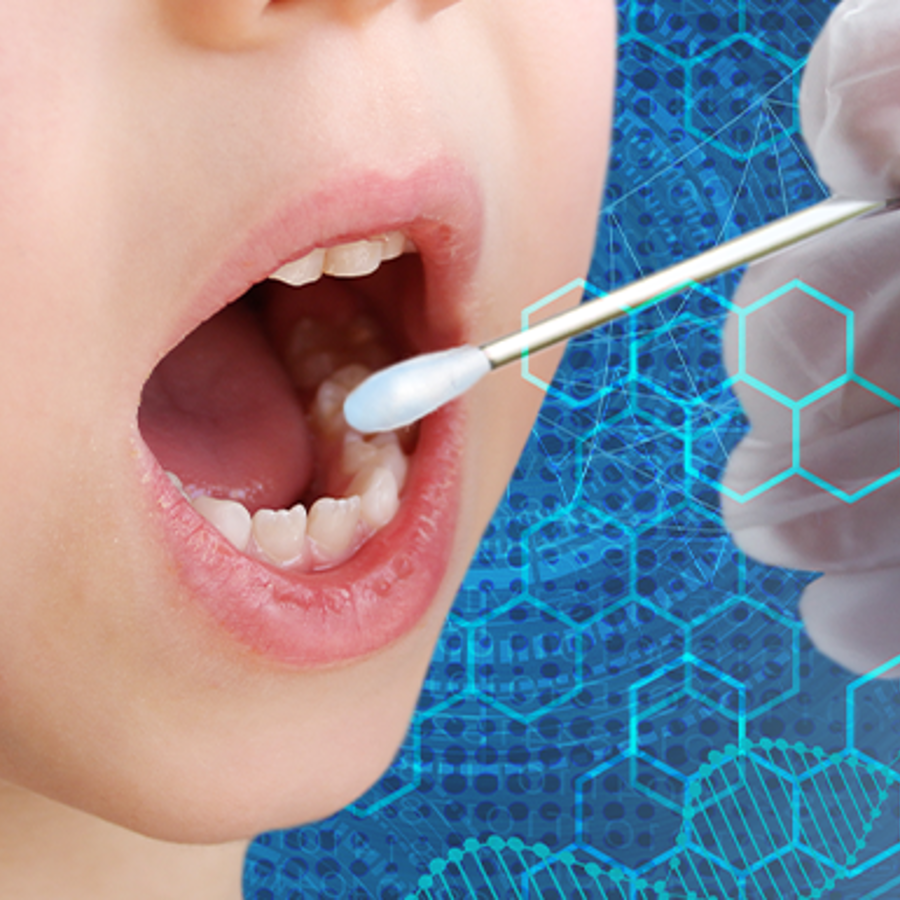
Is it possible to have a 20/20 match and not be the dad in a motherless paternity test?
October 30, 2008

- Related Topics:
- Paternity tests,
- Relatedness,
- Genetic testing
A curious adult from California asks:
"A friend of mine was involved in a motherless paternity test. He had a 20/20 match but knows he isn’t the dad. Is it possible to have a 20/20 match and not be the dad?"
Yes, this is possible. The main reason has to do with the fact that this test was a motherless paternity test.
A paternity test works best when it compares a child, a biological mother, and a potential father. When the mother isn't included, the results can be much trickier to interpret. Sometimes a 20/20 match does not mean that the man is the biological father.
A company I know looked at thousands of paternity tests they had done and asked if the results changed if they took out the mother's DNA. In other words, were there any cases where a man might look like a father in a motherless test when he wasn't actually the biological father? They found one case. So it can happen, but would be rare (as long as the company is a good one).
To understand how this could happen, we need to go into a bit more detail about how DNA is inherited. And how paternity tests work.
Paternity Tests
As I said, a paternity test compares a child's DNA to a potential father's DNA. You said your friend matched at 20/20 sites. This means that the test compared the child’s and the potential father's DNA at 20 different spots.
The spots they are comparing have lots of different names. They're called microsatellites, simple sequence repeats (SSRs), short tandem repeats (STRs), or variable number tandem repeats (VNTRs).
These are places in the DNA where a certain bit of DNA is repeated. For example, some people may have 10 copies of ATGC at a certain site while others might have 9 or 11 or whatever.
So that's what it means when you get a “D3S1358, 17/18”. You have 17 repeats on one chromosome and 18 on the other at D3S1358, a certain spot on a chromosome.
The two numbers come from the fact that we all have two copies of each of our chromosomes*. One chromosome of each of our pairs comes from your mother and the other from your father. This is why a motherless paternity test can be so tricky.
*There are exceptions to this. While most women have a pair of X chromosomes, most men have a mismatched X and Y pair. And some people have an extra or missing chromosomes.
Motherless Paternity Test
Let's say a test shows that at position X a child has a 20/19. Remember, this means that the child has 20 repeats at this spot on one chromosome and 19 on the other.
Now, let's say that a potential father has a 17/19 at the same position. From this we might conclude that the man gave the child his 19.
A paternity test would then do the same thing at many other sites. In your friend's case, the test looked at 19 other sites.
To understand the limitations of a motherless test, let's see what happens when we add in the biological mother’s DNA. The test shows that she has a 19/22 at position X.
We know that she is the biological mother, so she gave the child her 19. This means that the 20 had to come from the biological father. But the tested man didn't have a 20 to give.
A few more mismatches like this and suddenly the rock solid 20/20 result is on shaky ground. The man no longer looks as likely to be the biological father.

Mutations and Mismatches
In our example above, if there was only one mismatch, then the man still has a high probability of being the biological father. In other words, 19 out of 20 matches is still good evidence that he is the father.
Why is this? It seems like even one mismatch would mean someone is not the parent. This would be true if DNA never changes. But it does.
The DNA sites these companies look at have a higher chance of being different between people than other sites. This is what makes them such good sites to look at.
The reason they tend to be different between people is that they have a higher chance of changing or mutating. In other words, these sites have a higher chance of changing when passed down from parent to child.
This is why one mismatch is not seen as too big a deal. These changes are rare but they do happen.
But the changes are rare. This means that two changes are even rarer and require extra testing. Three are so rare that very extensive additional testing needs to be done. And four changes usually means that it is impossible for the man to be the biological father of the child.
Back to Your Friend
What this all means is that your friend might not be the biological father even with a 20/20 match. All that needs to happen is that, at four or more of the matches, the mother actually gave the matched chromosome.
Imagine these results for a motherless paternity test, where blue numbers show where the child matches the potential father:
|
Marker |
Child |
Potential Father |
Potential Father |
|
A |
13/15 |
15/16 |
15 |
|
B |
9/11 |
11/13 |
11 |
|
C |
7/7 |
5/7 |
7 |
|
D |
10/12 |
12/14 |
12 |
|
E |
3/7 |
3/8 |
3 |
|
F |
4/6 |
4/8 |
4 |
|
G |
17/21 |
17/20 |
17 |
|
H |
9/14 |
11/14 |
14 |
|
I |
14/21 |
14/18 |
14 |
|
J |
19/19 |
19/21 |
19 |
|
K |
14/17 |
14/19 |
14 |
|
L |
14/17 |
14/21 |
14 |
|
M |
12/21 |
7/21 |
21 |
|
N |
9/13 |
9/15 |
9 |
|
O |
6/9 |
6/12 |
6 |
|
P |
4/17 |
4/18 |
4 |
|
Q |
8/16 |
9/16 |
16 |
|
R |
14/21 |
7/14 |
14 |
|
S |
17/21 |
17/18 |
17 |
|
X |
19/20 |
17/19 |
19 |
As you can see from this table, there are 20/20 matches. In every case, the man and the child share one chromosome.
Below is what might happen when we add in the mother's DNA. Matches to the mother are colored red, while matches to the father are blue:
|
Marker |
Mother |
Mother |
Child |
Potential Father |
Potential Father |
|
A |
13/16 |
13 |
13/15 |
15/16 |
15 |
|
B |
9/12 |
9 |
9/11 |
11/13 |
11 |
|
C |
7/9 |
7 |
7/7 |
5/7 |
7 |
|
D |
12/13 |
12 |
10/12 |
12/14 |
No |
|
E |
7/9 |
7 |
3/7 |
3/8 |
3 |
|
F |
6/12 |
6 |
4/6 |
4/8 |
4 |
|
G |
21/25 |
21 |
17/21 |
17/20 |
17 |
|
H |
14/18 |
14 |
9/14 |
11/14 |
No |
|
I |
7/21 |
21 |
14/21 |
14/18 |
14 |
|
J |
17/19 |
19 |
19/19 |
19/21 |
19 |
|
K |
14/21 |
14 |
14/17 |
14/19 |
No |
|
L |
11/17 |
17 |
14/17 |
14/21 |
14 |
|
M |
12/18 |
12 |
12/21 |
7/21 |
21 |
|
N |
12/13 |
13 |
9/13 |
9/15 |
9 |
|
O |
9/25 |
9 |
6/9 |
6/12 |
6 |
|
P |
12/17 |
17 |
4/17 |
4/18 |
4 |
|
Q |
8/20 |
8 |
8/16 |
9/16 |
16 |
|
R |
16/21 |
21 |
14/21 |
7/14 |
14 |
|
S |
10/21 |
21 |
17/21 |
17/18 |
17 |
|
X |
19/22 |
19 |
19/20 |
17/19 |
No |
Once we add in the mother's results, now there are four mismatches between the child and the potential father. It would be virtually impossible for the man to be the biological father of the child.
I think you can see why testing companies keep emphasizing how important it is to include the biological mother’s DNA too. A test is much stronger with all three DNAs.

Author: Dr. Barry Starr
Barry served as The Tech Geneticist from 2002-2018. He founded Ask-a-Geneticist, answered thousands of questions submitted by people from all around the world, and oversaw and edited all articles published during his tenure. AAG is part of the Stanford at The Tech program, which brings Stanford scientists to The Tech to answer questions for this site, as well as to run science activities with visitors at The Tech Interactive in downtown San Jose.
 Skip Navigation
Skip Navigation
